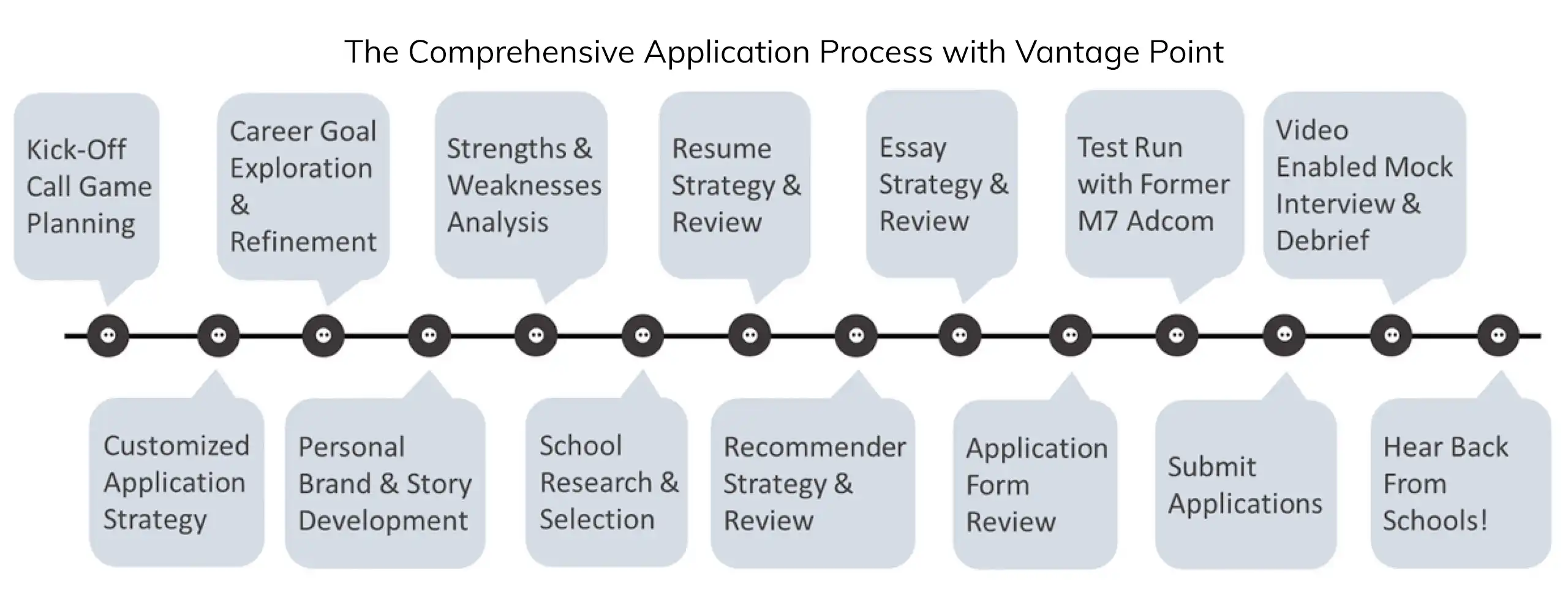2024-2025 Stanford MBA Essay Tips

Originally published on May 12, 2023. Updated on June 20, 2024. Earlier this week, Stanford announced its application deadlines for the ’24-’25 admissions cycle and confirmed that its main MBA essay questions will remain unchanged next year. For applicants preparing for Stanford GSB MBA essays, understanding the key elements is essential. The right Stanford MBA essay tips can help you craft essays that truly represent who you are. To succeed in your Stanford GSB MBA essays, make sure you focus on the experiences that best highlight your story. Given the reflection and iteration required to craft a compelling Stanford application, it’s never too early to get started on the essays. That’s why we’re arming you with our best Stanford MBA essay tips. These Stanford MBA essay tips will guide you in structuring your Stanford GSB MBA essays effectively. Crafting strong Stanford GSB MBA essays requires thoughtful reflection and clear storytelling, and these Stanford MBA essay tips will ensure you stay on track. With these Stanford MBA essay tips, you’ll approach your Stanford GSB MBA essays with a strategic mindset. Learn these Stanford MBA essay tips, and make your Stanford GSB MBA essays stand out. Help get your brain churning and begin drafting your Stanford GSB MBA essays with confidence!
Application Deadlines* for 2024-2025
- Round 1 applications are due on September 10, 2024
- Round 2 applications are due on January 8, 2025
- Round 3 applications are due on April 8, 2025
*Applications must be submitted by 4:00 p.m. Pacific Time
2024-2025 Stanford MBA Essay Questions
- Essay A: What matters most to you, and why? For this essay, we would like you to reflect deeply and write from the heart. Once you’ve identified what matters most to you, help us understand why. You might consider, for example, what makes this so important to you? What people, insights, or experiences have shaped your perspectives?
- Essay B: Why Stanford? Describe your aspirations and how your Stanford GSB experience will help you realize them. If you are applying to both the MBA and MSx programs, use Essay B to address your interest in both programs.
Both essays combined may not exceed 1,000 words. Stanford GSB admissions recommends up to 650 words for Essay A and up to 350 words for Essay B.
Optional Short-Answer Questions
Note that Stanford’s application also includes two optional short answer questions, which we recommend clients complete.
- Think about a time in the last few years when you’ve created a positive impact, whether in professional, extracurricular, academic, or other settings. What was your impact? What made it significant to you or to others? In the Essays section of the application, we ask you to tell us about who you are and how you think Stanford will help you achieve your aspirations. We are also interested in learning about the things you have done that are most meaningful to you. Using these optional spaces, perhaps you would like to expand upon a bullet item from your resume and tell us more about the “how” or “why” behind the “what.” Or maybe you have had an impact in a way that doesn’t fit neatly in another part of the application. You are welcome to share up to three examples (up to 1,200 characters, or approximately 200 words, for each example).
- We know that each person is more than a list of facts or pre-defined categories. With this space, we provide you with an optional opportunity to elaborate on how your background or life experiences have helped shape your recent actions or choices. (Up to 1,200 characters).
Where to Start
Before you think about putting pen to paper (or fingers to keys, as the case may be), it’s critical to take the time to truly understand Stanford GSB and what it looks for in successful applicants. To us, the best encapsulation of this can be found in the GSB’s mission statement: “Change lives. Change organizations. Change the world.”
While many business schools aspire to educate leaders that will make a difference in the world, there is a reason that ‘change lives’ comes first in this motto. The GSB embraces a strong belief that change originates from people. People with different perspectives interacting, challenging each other, and ultimately joining forces to push the limits of what seems possible. No man or woman can create change in a vacuum.
In practice, we find that successful Stanford GSB applicants personify this mission statement by displaying the following characteristics:
- A belief that EQ and people are just as important as IQ and profits – While demonstrating impact is critical, Stanford GSB seeks those who deliver it through collaboration with and/or for the benefit of others.
- Strong self-awareness – The essay prompt says it all, Stanford GSB cares what matters to you and how it has influenced your choices in life. Scratching the surface of self-awareness is not enough; beyond articulating your emotions in a given situation, they want to see that you can connect situations to your core values and underlying motivations.
- A willingness to take risks – Change is impossible without some level of risk and change is the crux of the GSB’s mission. They want to see that you don’t let fear stand in the way of progress – for yourself and for others.
How Do I Uncover ‘What Matters Most to Me’?
Attempting to crystallize what matters most to you is incredibly intimidating! If you’re digging deep enough, figuring this out is not something that can be done in a day or even a week. That’s why starting early is critical.
- To begin, we love suggesting that clients read two great books, True North by Bill George and What You’re Really Meant to Do by Robert Kaplan. Give thought to where you dream of taking your career (and life more broadly) and why.
- From there, it can be helpful to think back to each major decision you’ve made in your life and reflect on why you made the choice you did. Are there any commonalities?
- Lastly, think about influential people or events in your life stretching back to childhood. What or who has made you who you are and why?
Once you’ve done all this reflection (and written it down!), look for points of intersection and interrelation. Sometimes another set of eyes from a trusted friend or family member can be helpful here. More times than not, there is a common passion, motivation, value, or trait that connects what you’ve done in the past and what you hope to do in the future. This common thread can serve as your overarching theme and answer to ‘what matters most to you’.
Turning Your Theme into a Strong Stanford MBA Essay A
The essay itself should prove that this ‘thing’ is truly what matters most to you by laying out 2-3 stories and describing how they connect back to it. While the stories are typically told in chronological order, the essay should not read as your memoir. Be thoughtful and strategic, choosing only your most powerful examples.
Introduce Your ‘Superhero Origin Story’
Many times, successful essays begin with what we refer to as a ‘superhero origin story’. By this we mean the time in your life or experience that first brought your ‘thing’ (i.e., what matters most to you) into play for you. It is the defining moment that triggered a shift in your thinking or approach in a way that has stuck with you from then on out, influencing who you’ve become and who you hope to be in the future.
Show Your ‘Why’, Don’t Tell
The balance of Stanford MBA Essay A should focus on one or two other situations from your life since the ‘superhero origin’ where the thing that matters most to you influenced your actions or choices. One of these (or a third topical area if you have space) can be devoted to your vision of the future. You have space to further spell out your plans in Essay B, but you should lay out, in broad strokes, how your ‘thing’ influences where you want to take your life in Essay A.
Putting it All Together
Once you have the backbone of your essay in place, our advice is to go back and add stylistic nuances that demonstrate you possess the characteristics the GSB seeks. Describe interpersonal dynamics within each story and how you successfully navigated them. Layer in emotion and insights about yourself that demonstrate self-awareness. Importantly, write so that the adcom feels your authentic passion for the topic you have chosen to discuss.
If this sounds difficult, that’s because it is. Writing a strong Stanford essay takes upfront investment in introspection and time to iterate (and then iterate again). It’s not uncommon for us to work through 10-20 drafts of this essay with clients because, even with professional help, that’s how long it takes to make it perfect.
Stanford MBA Essay B is Straightforward but Not ‘Easy’
Once you’ve outlined generally where you want to take your life in Essay A, Essay B is your opportunity to get tactical. Share your specific post-MBA goals and describe why an MBA and the GSB’s program in particular are necessary to help you achieve them.
Specificity and Personalization Are key
If someone could blindly read your Stanford MBA Essay B and think it applies to another MBA program, you are not being specific enough. If they could read it and think the ‘why Stanford’ you describe could help someone achieve different goals than those you are targeting, you are not personalizing your reasons sufficiently.
Writing a successful Essay B requires more than just perusing the GSB’s website for classes and its own description of why the program is unique. Talk to alums and current students, attend webinars, stroll campus if you can, and, critically, reflect on the specific skillsets (hard or soft) you need to build to achieve your most aspirational goals.
Overwhelmed? We get it – the Stanford GSB application is perhaps the most challenging MBA application out there. If you need assistance, feel free to reach out to request a free consultation.
Katie is a passionate mentor and coach, helping her clients craft a unique, compelling story by leveraging her experience as a corporate executive, alumni interviewer, and campus recruiter. Before completing her MBA at Kellogg, Katie spent five years in banking where she learned practical finance skills as well as how to operate in a demanding, high pressure environment. She pursued an MBA in order to transition to an industry role where she could utilize her finance knowledge to drive change within an organization. Post-MBA, she worked in finance and strategy for a leading CPG firm, progressing to an executive role leading the finance function for a $2B business segment. Her experience managing diverse teams led to a passion for developing others. In addition to her day-to-day responsibilities, she led her firm’s MBA recruiting efforts and served as an alumni admissions interviewer for Kellogg.




